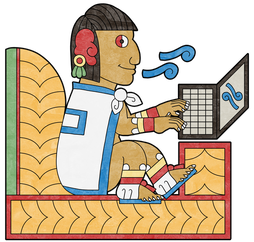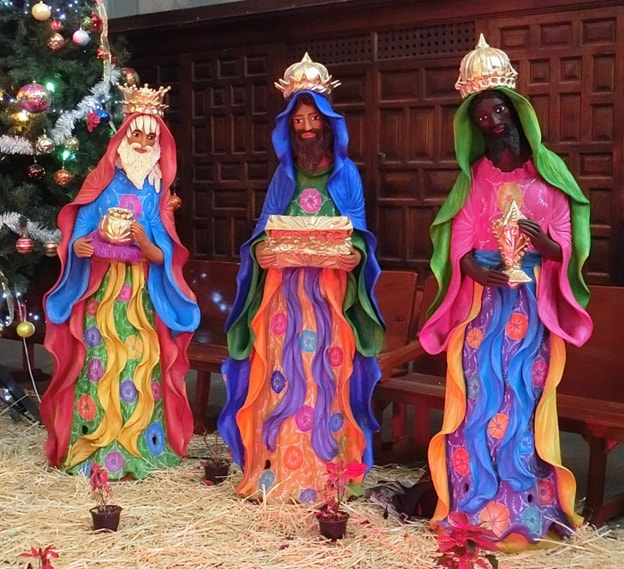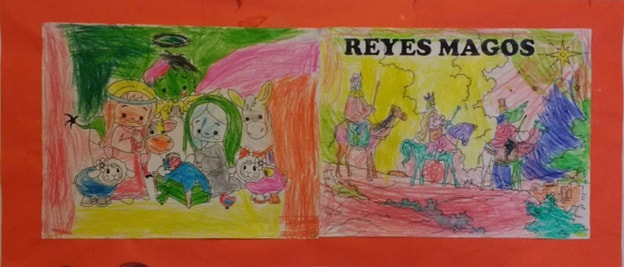THE THREE KINGS RIDE ON DESPITE GLOBALIZATIONDESPITE GLOBALIZATION By Álvaro Ramirez 18 JANUARY, 2019 Many Mexicans who grew up in the sixties and seventies remember when Las Ardillitas (Alvin and The Chipmunks) used to sing Christmas songs in Spanish and Pánfilo, the bad ardillita, was always making funny comments that undermined the Christmas message of the songs. The manager, Lalo Guerrero, considered his comments improper and admonished him: “I’m absolutely certain that Santa Claus will not bring you anything.” To which Pánfilo responded: “Who cares, I’m not a client of that man; the Three Kings bring me my toys.” Back then, many people sympathized with Pánfilo and saw Santa Claus as an exotic American foreigner, nowadays it seems that sentiment has gone by the wayside, but is this really the case? Any way you look at it, the Mexican holiday season has taken an American turn, especially during the NAFTA epoch, every year we can see the spirit of an American Christmas gaining ground in Mexico and giving the old Mexican yuletide traditions a run for their money.  Photo: Álvaro Ramírerz Photo: Álvaro Ramírerz You can find Christmas trees (fake and not too attractive) in most downtown areas of big cities, surrounded lately by an ice rink in an attempt to recreate the festive ambiance of cities like New York. Colorful lights and decorations, made easily available through COSTCO and Walmart hang uneasily from roofs, walls, and around windows or adorn artificial trees in many homes. Walk through any Galerías Mall or Supermarket and you can merrily shop along isles trimmed with wreaths, mistletoe, silver bells, and Christmas carols (sung in English) swirling all around, seducing you to shop for the perfect gift for your loved ones. Television programs and movies like Rudolph the Red-Nosed Reindeer also stir up the holiday cheer, American style. And of course, you will find a Mexican Santa Claus somewhere in a Plaza Galerías ready to take a picture with you so you can post it on your Instagram and Facebook and relieve the memory forever. Yet, far away from downtown areas, malls, and transnational stores, in the barrios one can still hear the beautiful sounds of Las Posadas with their ancient Spanish Christmas songs, piñatas, aguinaldos (gifts of candies), and great food. Christmas Eve (La Noche Buena sounds better, the words strike a beautiful chord within us) still brings the family together to share a special meal of tamales and other traditional foods. Many people attend the midnight church mass to witness the birth of Baby Jesus (almost always a little too white, but who cares) to Mary and Joseph in a manger surrounded by shepherds, sheep, an ox, and a mule; overlooking it all a beautiful angel. It is a ritual that reinforces the bonds of family and community. Even more far away, over in the Orient Three Magic Kings, Melchor, Gaspar, and Baltazar, get ready to do battle with the laughing, merry, old Nordic Man. In the days before Santa Claus invaded their territory, the kings began their trip around the world early to arrive and deliver gifts in every home during the magical morning hours of January 6. Throughout the previous afternoon and night, radio disc jockeys announced their regal whereabouts: a plane spotted The Three Kings over the Pacific Ocean; they have just passed the islands of Hawaii, soon they’ll arrive at the Baja California Coast. Go to sleep children and leave hay for the camels that the Three Wise Men are riding laden with gifts, which they’ll stuff into millions of shoes. The excitement of the anticipation made it difficult for children to restfully sleep on this enchanting night. Nowadays, the situation is a little tough for these wise men from the Orient. Santa Claus is a hard act to follow but the Three Kings still have their magic. In the old days, children used to imagine them loading up somewhere in the Orient even though it was popularly thought that Melchor was Spanish, Gaspar an Arab, and Balthazar an African (religious authorities saw them as learned men; Melchor as king of Persia, Balthazar king of Arabia, and Gaspar king of India). The star they now follow takes them through the Far East and they make a stop in China. That’s where they pick up the toys probably put together by underpaid Chinese children for Mexican children. The toys may have a little too much lead content, but who cares, they’re cheap, and this is all the Three Kings can afford to deliver to many households in Mexico. The same toys you can find being sold on the sidewalks surrounding town centers and public markets, teeming with people on January 5th. These are the gifts that will find their way into many shoes throughout Mexico, with the help of the Three Wise Men, to bring happiness to millions of children. Yes, Pánfilo, despite the fact that globalization helps Santa Claus gain followers by leaps and bounds, there are still many Mexicans like you who are faithful clients of The Three Kings. These Mexicans are not as separated as it might seem, some may look toward the mall and others toward the sidewalk and public market vendors to celebrate the birth of Jesus, still they are united by the magic of the magi when both groups buy the yummy rosca de reyes (a sort of oversized pastry donut or bagel) to share with family. In this way, the Three Kings bring together Mexicans on January 6, as they gather round “la rosca” to break bread literarily and figuratively as a nation. It does not end there; inside those oversized donuts are several, tiny plastic Baby Jesus. If you get one in your slice you are obliged to continue the harmony brought by the Magi. You will gather everyone again on February 2, Día de la Candelaría (Candlemas), to eat tasty tamales, paid by you. In spite of globalization and the expansion of Santa’s influence, the visitors from the Orient are still quite relevant in our lives: The Three Magic Kings still rule! A different version of this postcard was previously published under the title, “I grew up believing in the Three Wise Men. I think they are way better than Santa,” that appeared in Cultura Colectiva, a Mexican digital magazine in January 2019.  Álvaro Ramírez is from Michoacán, México. He migrated with his family to Ohio as an adolescent. He obtained a BA in Spanish and Education at Youngtown State University, and an MA and PhD in Literature from the University of Southern California. He has taught at various institutions including the University of Southern California, Occidental College, and California State University, Long Beach. Since 1993, he has worked at Saint Mary’s College of California where he is a Professor in the Department of World Languages and Cultures. He specializes in Spanish Golden Age and Latin American literature as well as Mexican Film and Chicano Cultural Studies. He recently published the book, Postcards from a PostMexican on the swiftly evolving transnationalization of both cultural and political characters of the U.S. and Mexico.
0 Comments
Your comment will be posted after it is approved.
Leave a Reply. |
Archives
June 2024
Categories
All
|
Donate and Make Literature Happen
is published by the Somos En Escrito Literary Foundation,
a 501 (c) (3) non-profit, tax-exempt corporation. EIN 81-3162209




 RSS Feed
RSS Feed